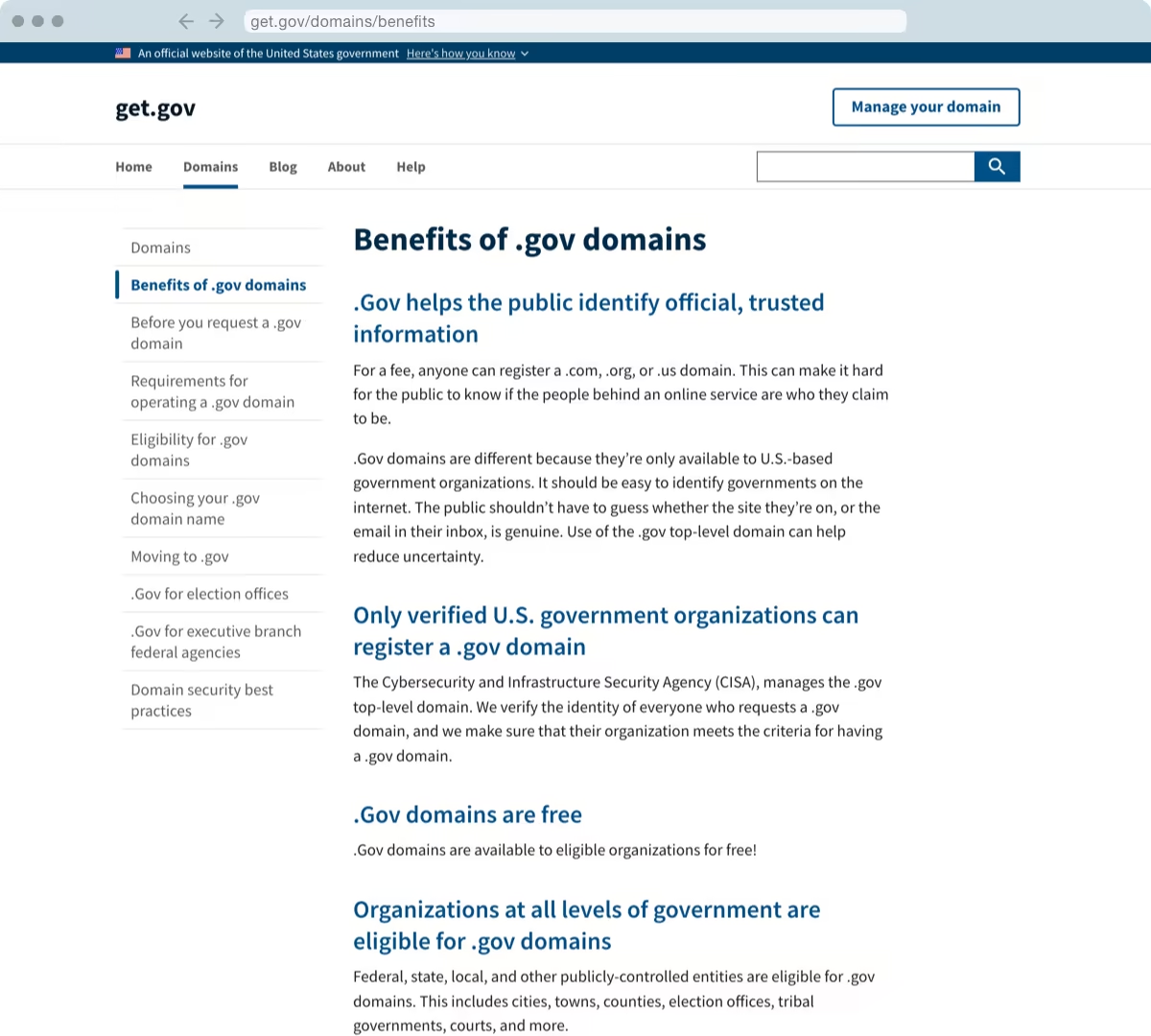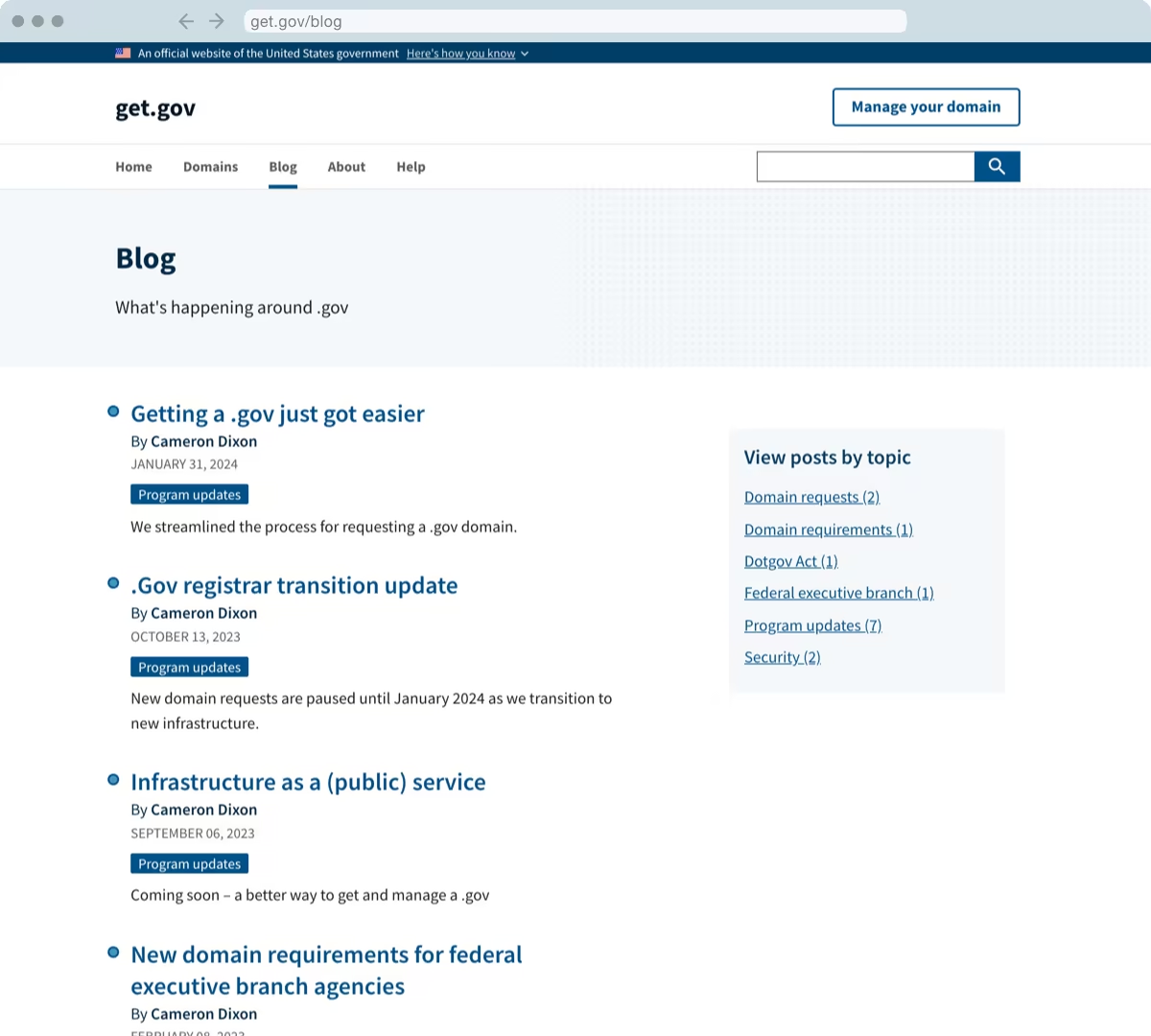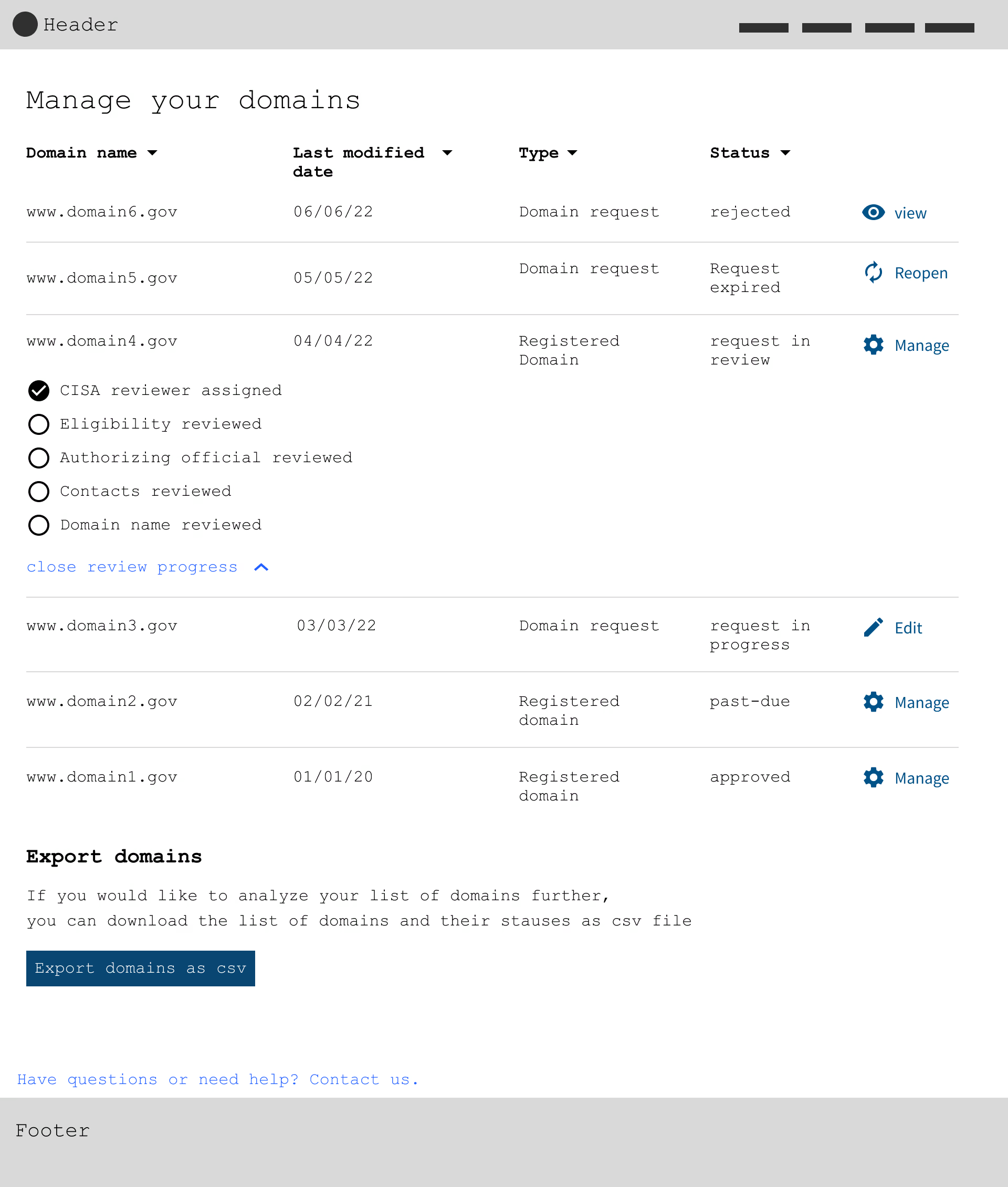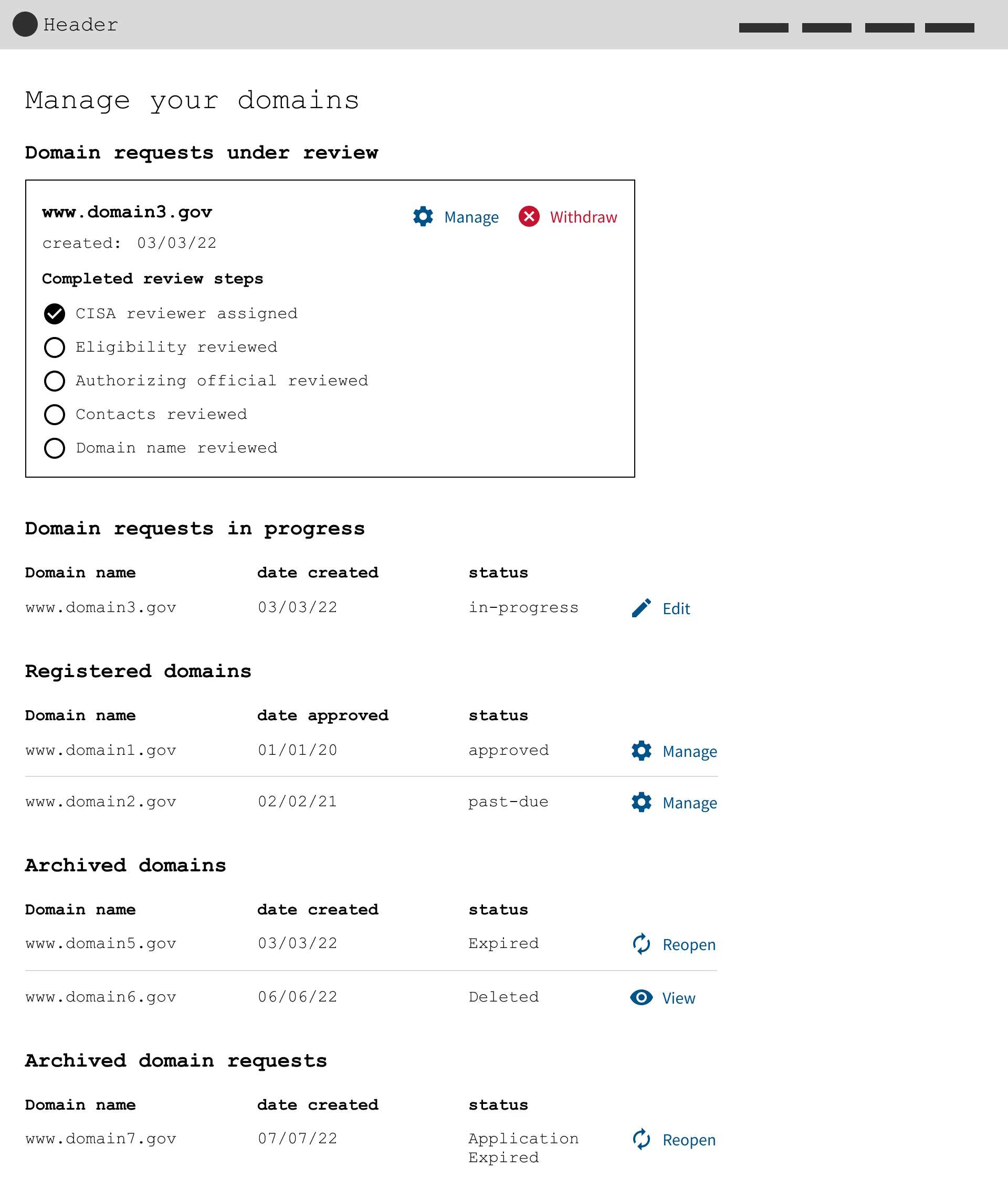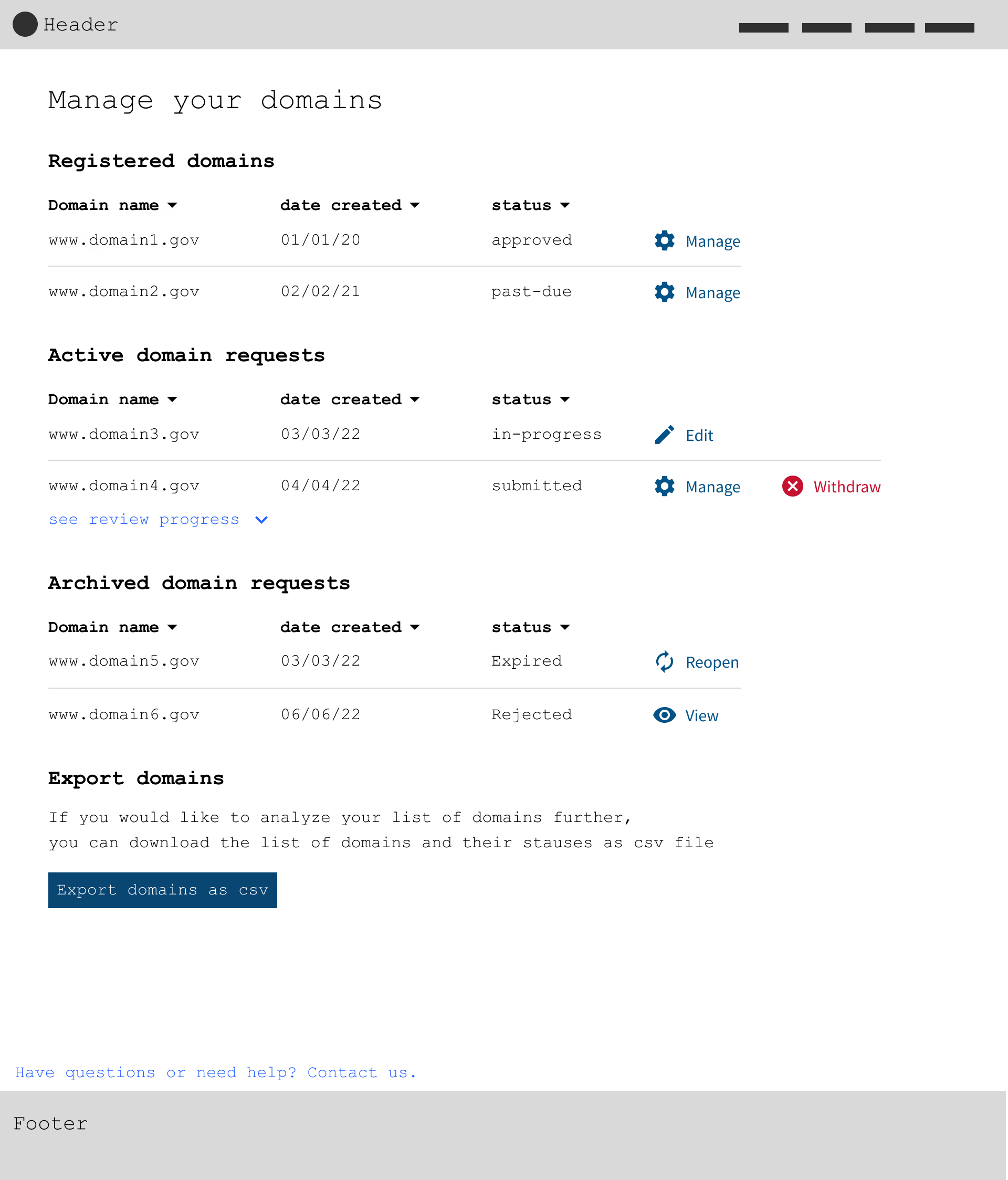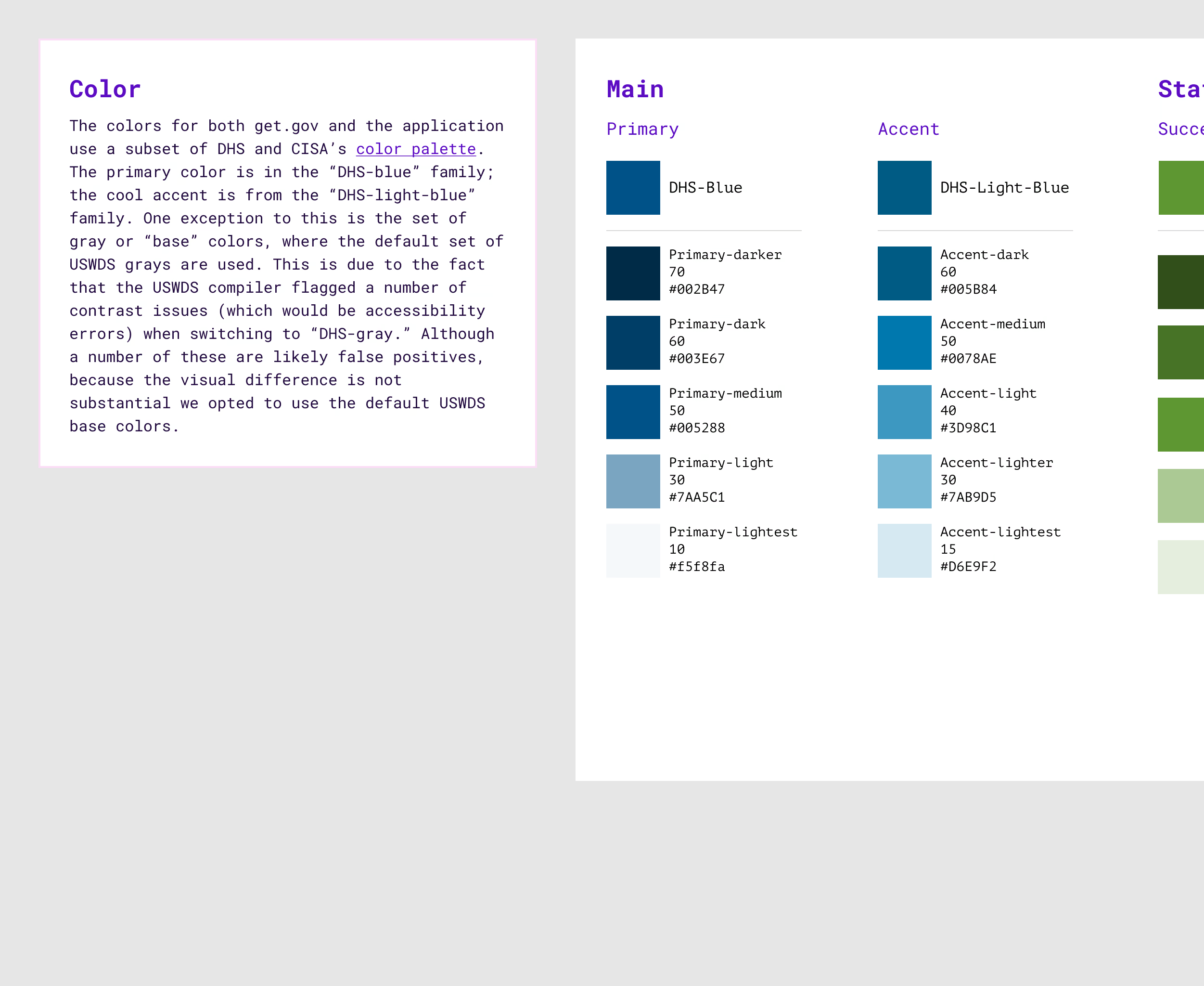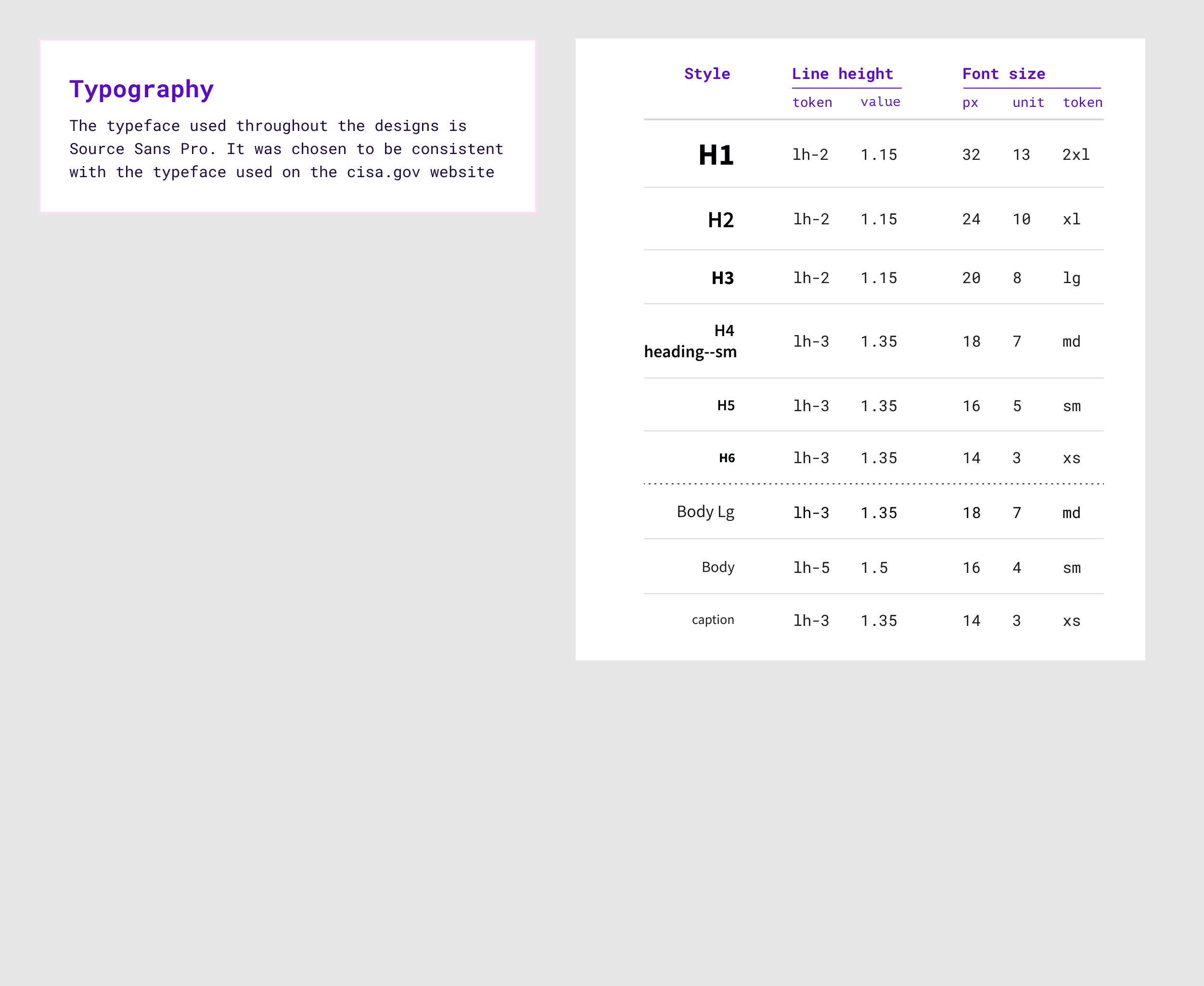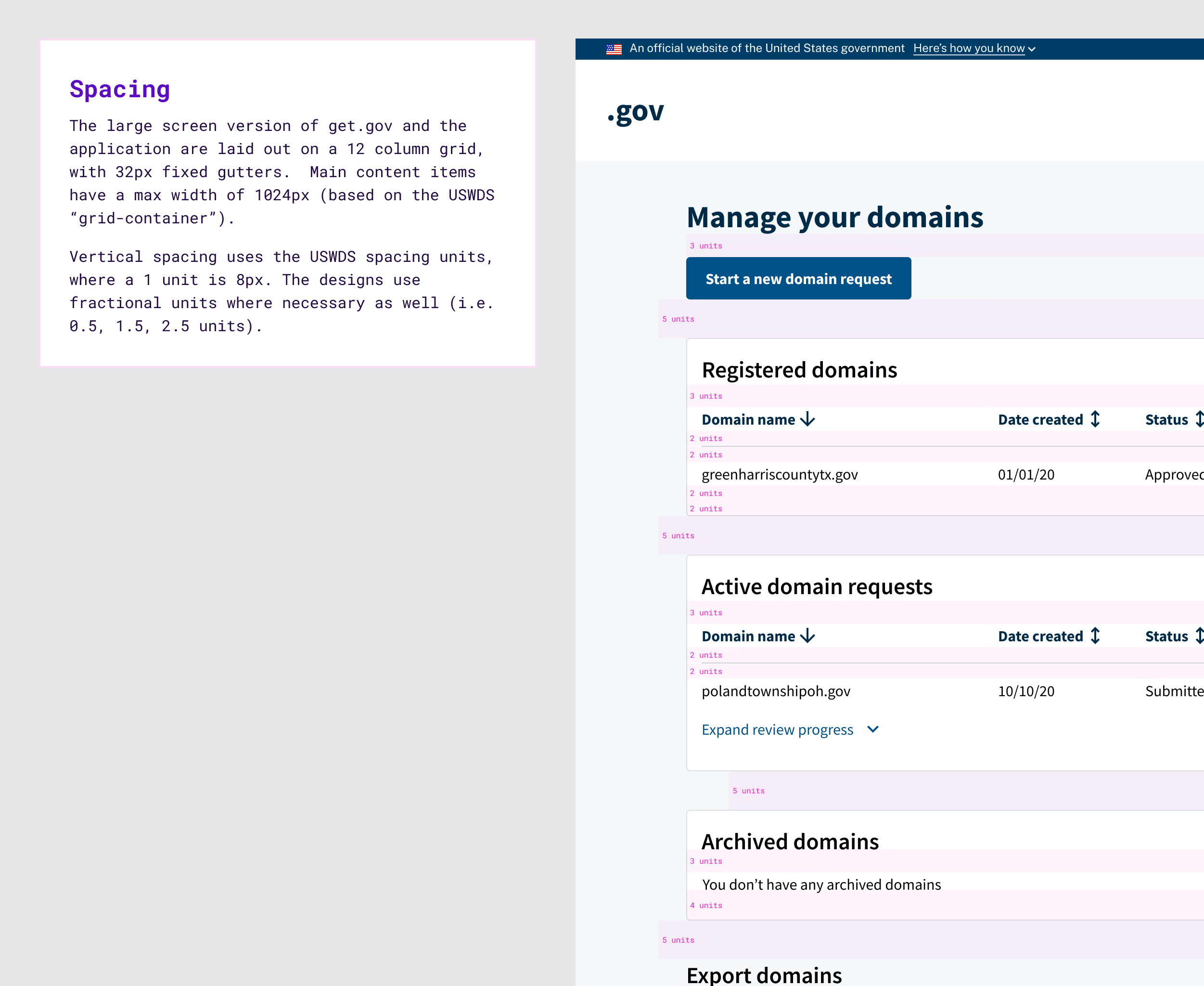Get.gov
The .gov top level domain is an important signifier. It lets users know that the site and information they are reading is official and trustworthy. However, the process for getting a .gov domain used to be complicated and cumbersome. One of the steps required administrators to get a wet signature from their highest ranking official, such as the city mayor or the state governor. Our 18F project team worked to redesign this process to make it easier and clearer for users seeking a .gov domain. In my role as the product designer I worked with our team to:
- Reconfigure the domain request process
- Create a new request form that used clear language and a stepped approach
- Develop a visual style and design components for the different sites and applications
- Lead the development and implementation of the public facing get.gov using 11ty, a static site generator.
Client
CISA
Contribution
Product design, wireframing, prototyping, frontend engineering
The director of the .gov program described the design for the new site as peaceful and calming. This is an especially nice contrast to the typical image of a bureaucratic process.
Building a New Way to Request and Manage .gov Domains
Discovering the pain points in the process
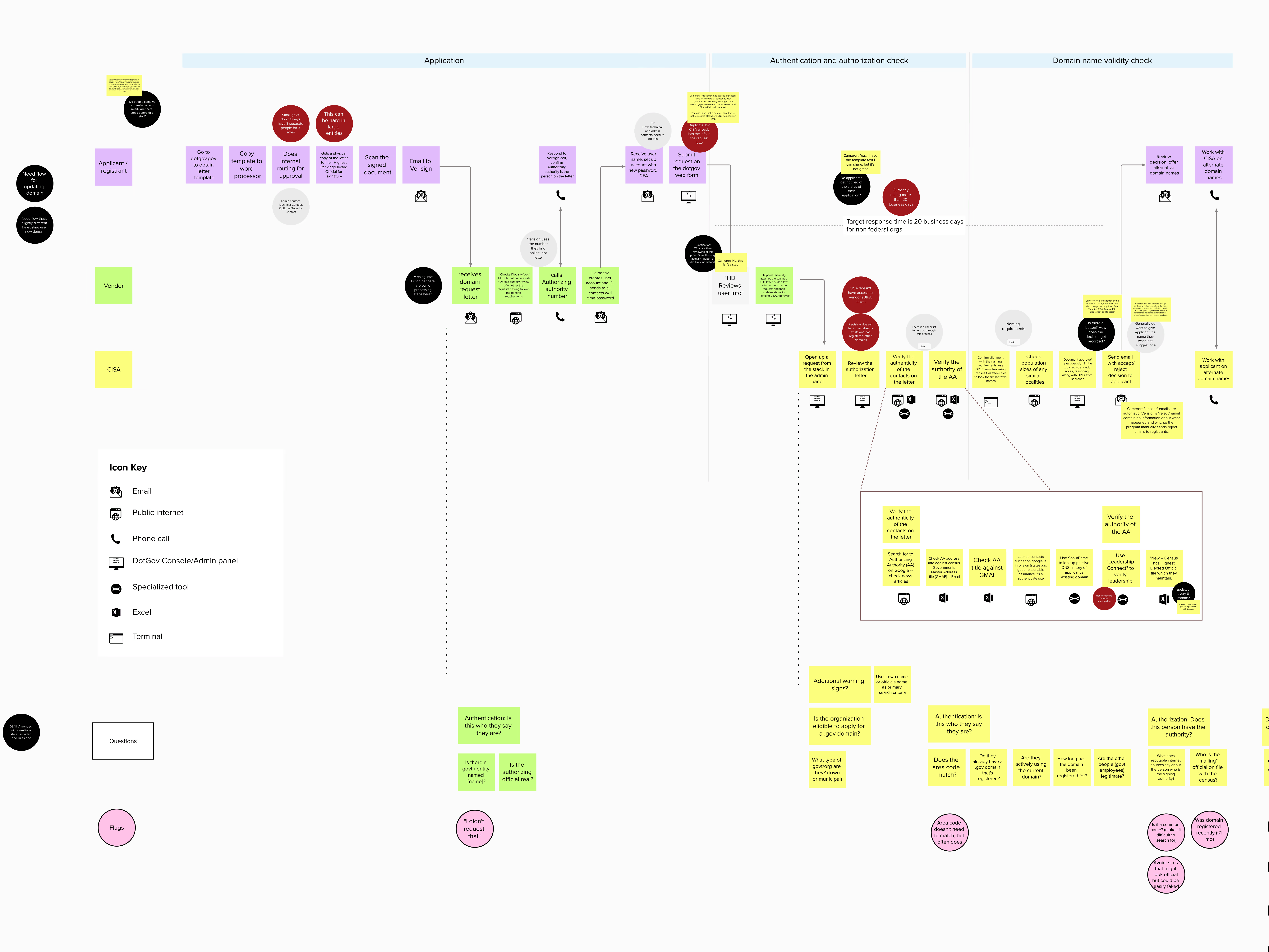
At the beginning of the project I put together a journey map of the complex registration process. This gave our team a much better understanding of what registrants were experiencing. Using this tool we were able to capture pain points and bottlenecks and start to form ideas on how we could improve the process. This mapping also helped facilitate conversations with our client and make sure that we had a clear understanding of the problems we were solving.
Moving the domain request process online
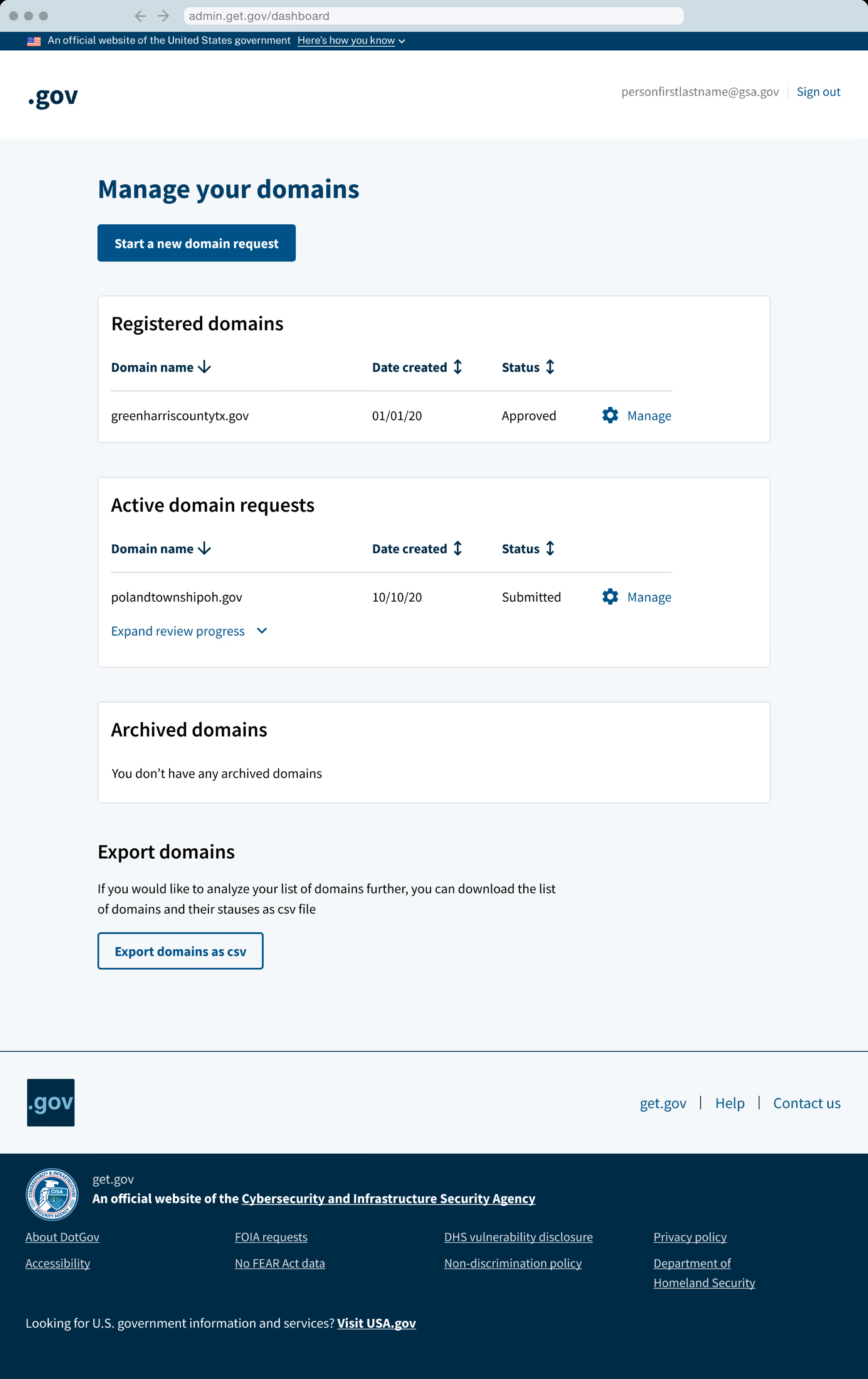
I made the domain management dashboard simple and intuitive for new and experienced domain managers. Users can now easily begin a new registration request or make changes to domains they already manage. All of these tasks can now be done without contacting the help desk, reducing both costs and time for the .gov domain team.
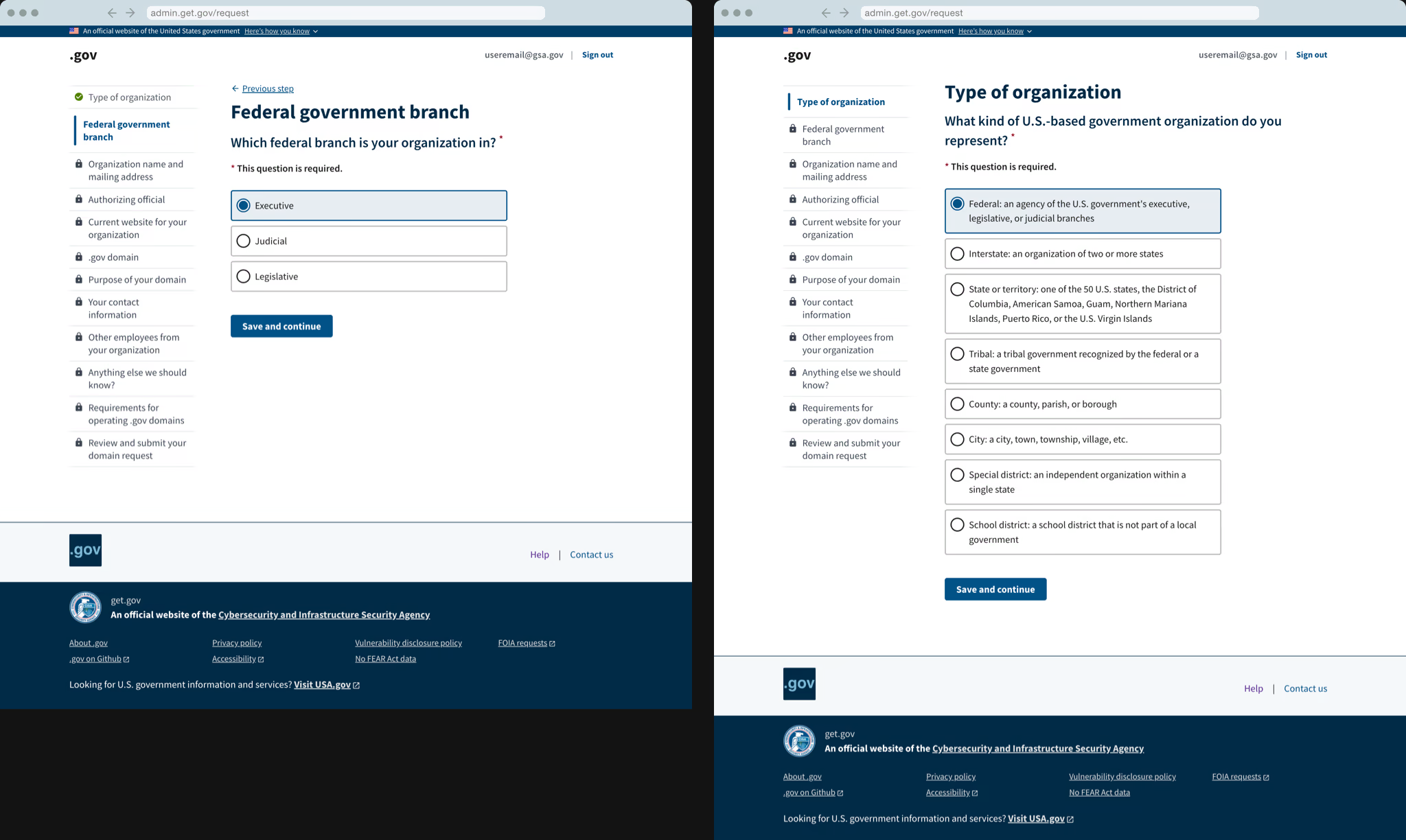
I worked with a content strategist and a UX researcher to create a form flow that was approachable and clear for new .gov registrants. We tested our the new form in several rounds so that we could refine the journey and fix any issues that our users had when trying to complete the form.
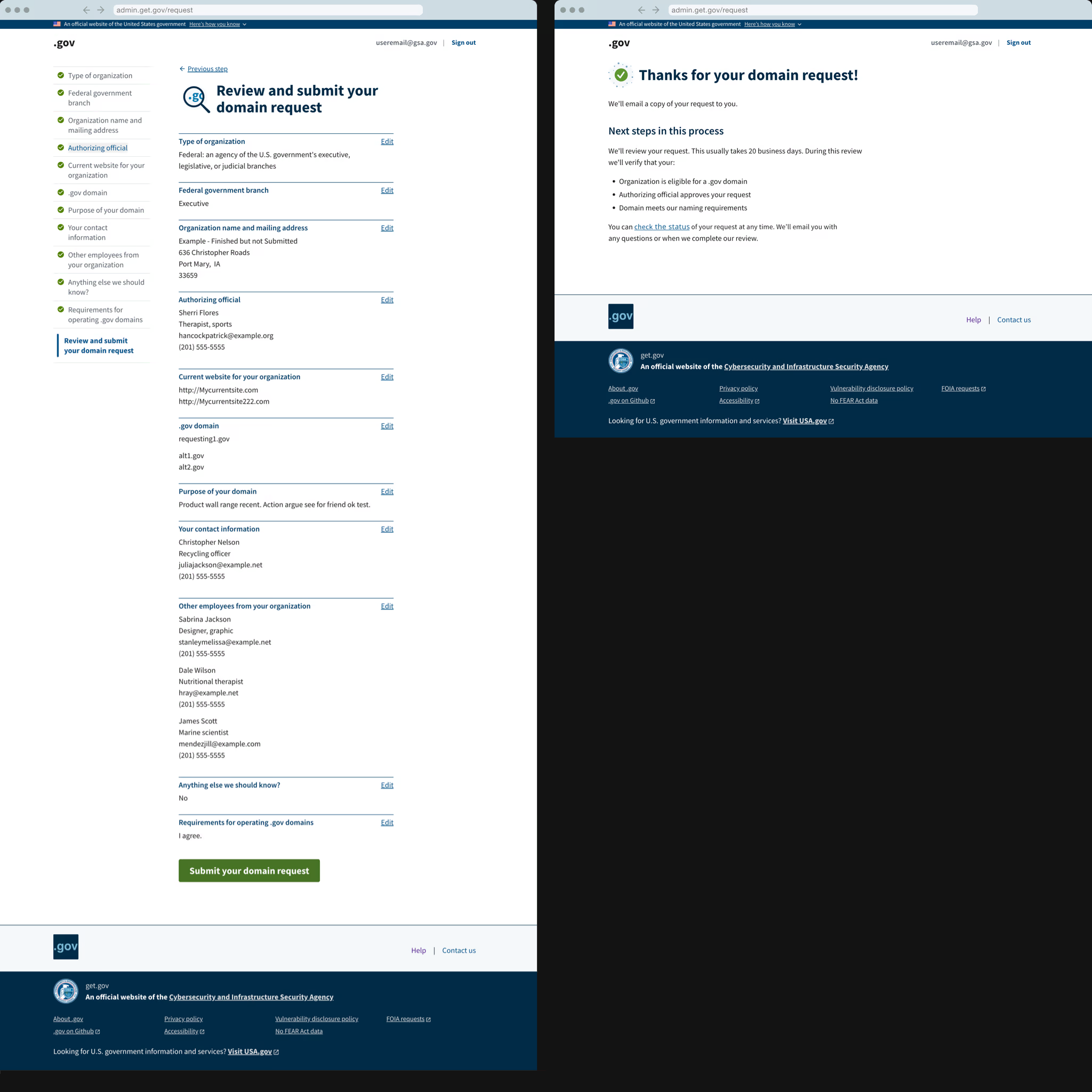
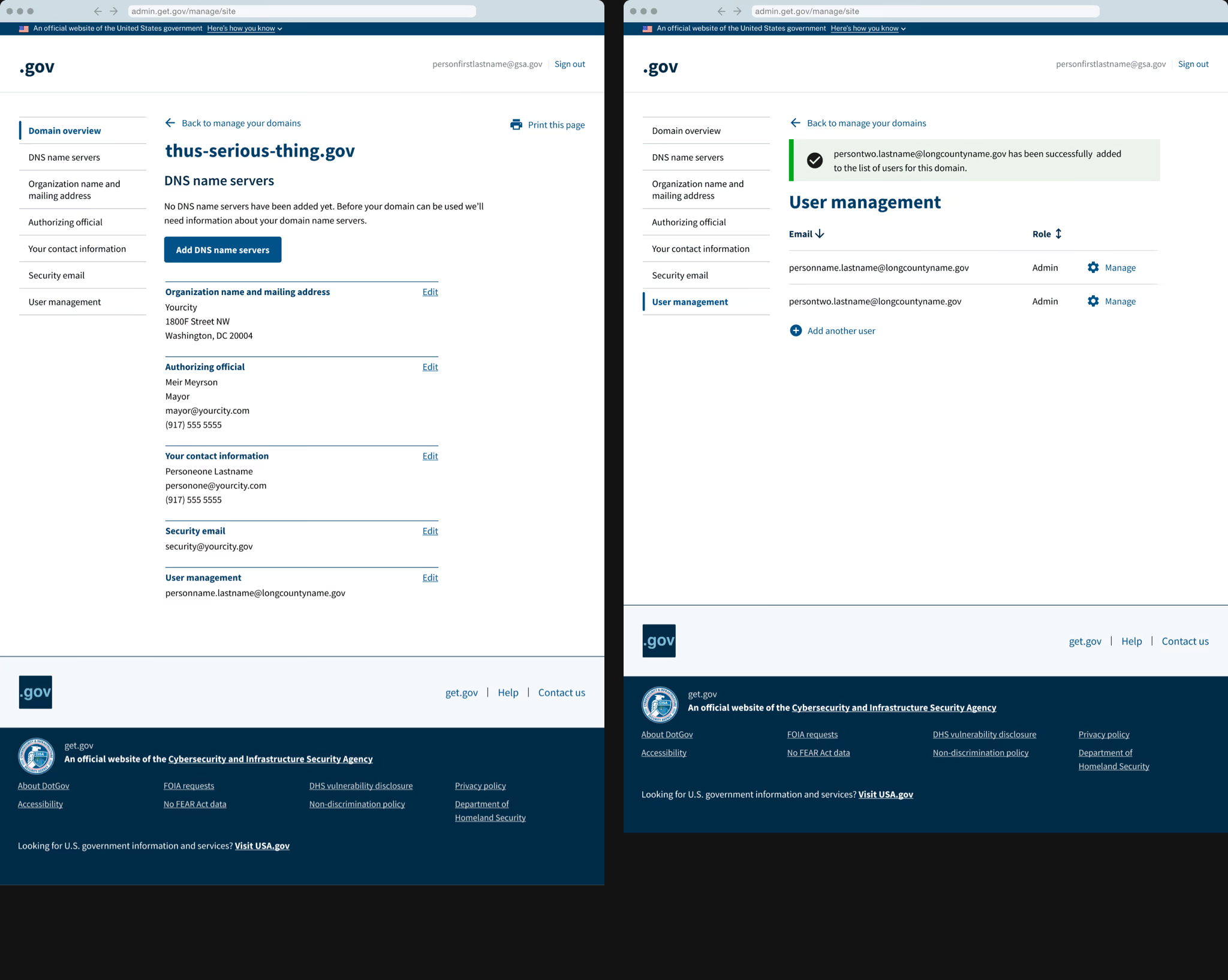
I designed the interface for managing a registered domain, taking care to do so in a way that the actions that users needed to take were as clear and intuitive to them as the initial registration form. This was particularly important because site managers do not need to visit this interface often, and so when they did we wanted to make sure they could perform the most important tasks quickly and effectively.
Wireframing Our Options
I designed a wide range of wireframes to quickly iterate and explore different options for the flows and layouts. This enabled our team to have effective conversations and make informed product decisions. These early wireframes not only helped us evaluate ideas internally, but also helped get stakeholder approval because they could provide feedback on a tangible artifact.
The Public Site
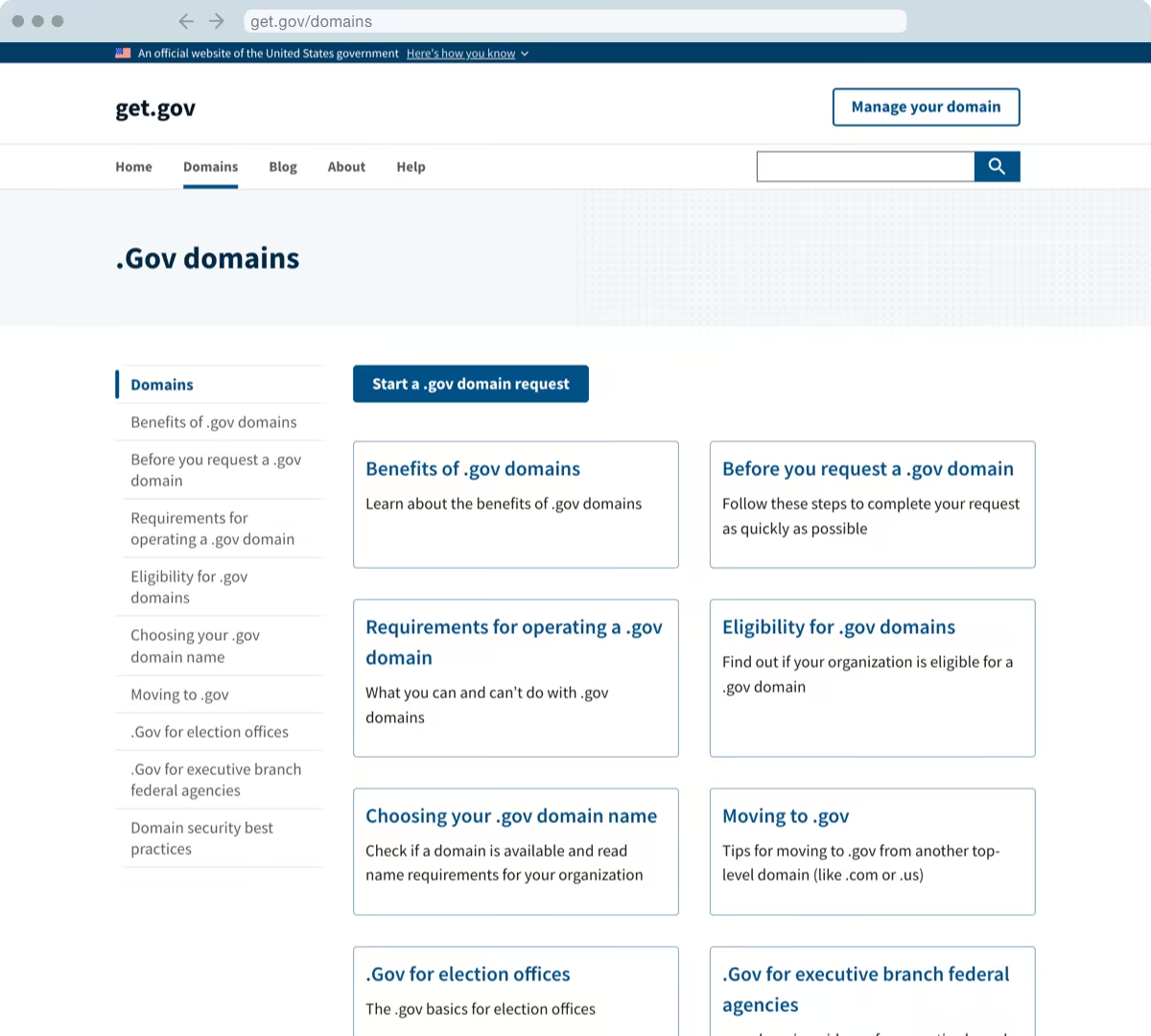
Collaborating with our content strategist, we created a public site that explained the registration process in plain language. This site provides resources so that public servants at all levels could understand the benefits of registering a .gov domain and be informed about how to get one. In addition to the design work I led the development of the public site.
